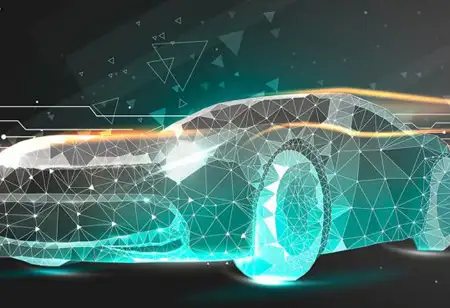Thank you for Subscribing to Auto Business Outlook Weekly Brief
The Importance Of Sensor Technologies To Build Future Automobiles
Automobiles must operate a vast range of parameter data to attain complete observability, comprising velocity, current, pressure, temperature, placement, proximity disclosure.

By
Auto Business Outlook | Tuesday, July 30, 2024
Stay ahead of the industry with exclusive feature stories on the top companies, expert insights and the latest news delivered straight to your inbox. Subscribe today.

The Role of Sensor Technologies to Shape Future Automobiles
FREMONT, CA: Automobiles must operate a vast range of parameter data to attain complete observability, comprising velocity, current, pressure, temperature, placement, proximity disclosure, and gesture identification.Currently, Sensors are an integral part of any trendy automotive design, giving a variety of operations. They play a vital role in helping automakers bring safer, more fuel-efficient, and more satisfying models to market. Eventually, sensors will also allow greater levels of vehicle automation to help the industry.
Intelligent compliance
Automobiles must operate a vast range of parameter data to attain complete observability, comprising velocity, current, pressure, temperature, placement, proximity disclosure, and gesture identification. Also, cognitive observability is required for an automobile to work autonomously and process data. Ultrasonic sensors and time-of-flight (ToF) cameras are now starting to be included in automobiles for closeness detection and gesture identification, which have made considerable progress in recent years.
Ultrasonic sensors
As vehicle automation progresses, we are noticing the utilization of new technology in the automotive sector for the first time and the accommodation of present automotive technologies to the special needs that autonomous driving will enforce. Ultrasonic sensors are usually installed in vehicle bumpers for parking support systems. Such sensors are now anticipated to function at speeds under 10 km/h and cannot measure small distances with 100% precision. In an autonomous vehicle, these sensors might be utilized with radar, cameras, and other sensing technologies to estimate distance.
Gesture recognition
While ultrasonic sensor technology inspects the exterior environment, ToF cameras concentrate on the vehicle's interior. As the transition to autonomous driving will be progressive, drivers must be able to move from automated to manual mode in specific conditions.
Presently, via their Advanced Driver Assistance Systems (ADAS), cars are just partly autonomous, yet, human intervention may be required anytime. We expect that the sector will improve its level of automation in the subsequent years, but the driver will still be needed to take control in particular situations (e.g., when the car is in city centers). This will not change for a prolonged length of time. Before, a vehicle must be competent in cautioning its driver. Thus, observing the driver's position and movements in real-time is important. ToF technology is already in use, although in its babyhood, to notify drivers when they lose focus and compel their car to drift toward the road's side. It also allows the performance of different functions according to gesture identification, like employing hand swipes to enable the radio volume or to respond to an inward phone call. ToF's possibility goes far above these actions and will be essential in designing more refined driver automation. ToF cameras will be able to map a driver's complete upper body in 3D, permitting the decision of whether the driver's head is encountering forward and whether their hands are on the wheel.
See Also : Sensor Solutions Companies






